





























By Kristen Castillo





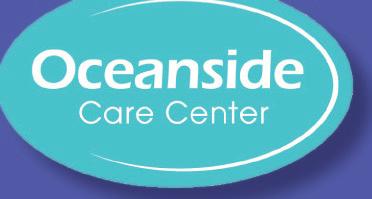









Once upon a time, self-care was considered slightly self-indulgent. The pandemic changed all that. Now it’s become an essential part of a healthy lifestyle. It’s not selfish to take care of yourself and your wellbeing.
“Self-care is vitally important because if you don’t take the time to stop and care for yourself, your body will stop you,” says mental health advocate Mark Henick. “If you never let your foot off the gas, you won’t keep driving forever — you’ll either run out of gas or crash. The same is true for the body and mind.”
Henick says self-care is a choice to rebalance your internal resources so you can bounce back from stressors.
Loving yourself
Self-care can range from taking “me time” breaks in your day or chatting with a friend to taking a soothing bath or crafting.
“Often, we posit that self-care is about doing less, but sometimes it is about doing more —at the end of the day, it is about responding to the needs of ourselves before others,” says Darren Pierre, Ph.D., author of “The Invitation to Love.”
He says self-care is all about being honest with yourself.
“The work is difficult because we can become easily distracted from focusing on ourselves,” Pierre says, urging people to “remain disciplined in the practice of self-care.”
“Self-care is choosing to honor your inner wants and needs in order to fulfill your potential,” says Kimberly Hershenson, a therapist specializing in eating disorders, anxiety, depression and relationships.
One of her self-care recommendations is to make a daily gratitude list. “Focusing on what is good in your life as opposed to what is ‘going wrong’ helps relieve stress,” says Hershenson, who also suggests reading positive affirmations every morning.
Snooze
Self-care isn’t necessarily tough to do, but finding the time to take care of yourself can be challenging. “Sleep is one of the best forms of self-care because it gives your body and mind some uninterrupted time to simply repair itself,” says Henick.
Author Carrie Aulenbacher is a busy working mom. She uses journaling as a selfcare tool.
“Making time to take care of me is hard,” she says. “But journaling helps me unload and address issues that affected me but got pushed aside throughout the day.”
She says everything ranging from serious writing to doodling to making lists is helpful and counts as journaling.
The business of self-care
This increased interest in self-care is a business boom, too.
According to the Global Wellness Institute, the global wellness industry is a $3.7 trillion market, including fitness, mind and body; healthy eating, nutrition and weight loss; and spa treatments.
That means increased opportunities for consumers to invest in themselves and their wellbeing. The wellness industry features countless self-care options, ranging from buying vitamin infused waters to planning wellness retreat vacations to scheduling fitness classes like yoga, dance and cycling. Try meditation, too. You can find guided meditations on YouTube or download apps such as “10 Percent Happier.”
“Schedule self-care time on your calendar,” says Anza Goodbar, a coach, speaker and trainer for entrepreneurs. “If it is not scheduled, it most likely won’t happen.”
She suggests starting a self-care routine in small steps, such as getting up 15 minutes early to start your day with meditation or a quiet cup of coffee. “The bottom line is to be intentional about taking care of yourself through the different stages of life,” Goodbar says.
Author, certified life and business coach Celia Ward-Wallace has two steps to selfcare: “First, carve out time for yourself in the morning or evening for regular rituals such as exercise, reading, walking, meditation or prayer,” she says. “Second, don’t over-extend yourself. Set healthy boundaries with family, friends and co-workers.”

to a certain extent, your genes play a big role in how long you live and how healthy you are. But the truth is, the things you do — and don’t do — in your daily life can help you stay healthy and active into your later years.
This month is the time to celebrate life and turn over a new leaf. September is Healthy Aging Month, a month dedicated to helping individuals gain a more positive outlook about growing older.
The Healthy Aging Campaign was established over 20 years ago to help everyone become aware of their physical and mental health, diet, social skills and even financial situations; all factors that contribute to successful aging.
At its core the message here applies to everyone at all ages: build a foundation early on with the principles of good health for well being at every age.
Do you ever wake up and think “Wow, I don’t feel as young as I used to?” It’s a sentiment shared by people of every age group. Fortunately, it doesn’t matter if you’re 20 or 60 — feeling fit and aging well can be a reality with the right mindset and proper exercise and nutrition.
You’ve probably heard a lot about wellness in the past few years — from “wellness initiatives” in the workplace to fitness classes promising that they will “restore your wellness.” Healthcare plans emphasize wellness now too — encouraging annual wellness visits as well as a variety of other preventive health services. But what exactly is wellness, and how can you implement it in your everyday life?
Wellness refers to the pursuit of a healthy, balanced lifestyle focused on both the mind and the body. Pursuing wellness also means following healthy aging strategies, and implementing lifestyle changes that can prevent diseases before they occur.
According to the CDC, about half of all American adults have one or more chronic conditions (such as heart disease, stroke and obesity). Even worse, around 70 percent of Americans die from chronic diseases and conditions each year — many of which are completely preventable. By focusing on preventing diseases before they occur, people of all ages can live healthier and happier lives.
Eat right
Really we all we should eat a nutritionally sound meals and foods, but that understanding is often compromised by our modern “grab and go” lifestyle. Eating well remains difficult not because it’s needlessly complicated but because the choic-
es may seem hard even when they’re really not.
Find your motivation to focus on the “right way” to eat. For most adults this means at least 400 grams (5 portions) of fruits and vegetables a day, as well as five to eight 8-oz. glasses of water. We all know, but don’t always heed the nutritional advice, that it is also important to keep your sugar intake low and to avoid highly processed foods that contain lots of sugar, fat, and salt. Try using spices and fresh herbs for flavor in your favorite dishes (rather than extra butter or fried coatings) and consider swapping less healthy ingredients for their vegetarian version, such as zucchini noodles instead of regular pasta.
To increase your water intake (and decrease sugar), try subbing homemade flavored water for soda. Just add whatever natural ingredients you like to your next glass of water, such as lemon juice, cucumbers, fresh mint/basil, or strawberries.
Stay active — in a way that’s fun for you
You don’t have to be a gym rat to maintain a healthy level of activity. If aggressively working out, yoga, Pilates or running is your thing, that’s great. If not, find an alternative.
You’re more likely to stick with an athletic activity that you actually enjoy, so consider walking with a friend, trying a group dance class, going for a hike, or anything else that appeals to you. You can start with just 10 minutes a day, and eventually try building towards 30 minutes or more of daily exercise. Every little bit helps.
Try meditation
New studies have shown that meditation may prevent mental deterioration, keeping your brain healthy as you age. Meditation is also a proven way to reduce stress and anxiety, leading to better overall health and quality of life.
Learn a new skill
Try learning a new skill that requires concentration, creative thinking and memorization, like chess, crossword puzzles, Mah Jongg or canasta, even writing poetry. It’s never too late to master that skill you always wanted to have — piano playing perhaps, or speaking French? Daily mental exercise helps you stay sharp and prevents cognitive decline.

Naturally hydrating foods you’ll want to snack on every day
By Joey Skladany
Getting adequate hydration each day is easier said than done. But fear not: Hydration can be achieved beyond water consumption and with a diet of foods that nourish and moisturize from the inside out. Plant-based registered dietitian Amy Gorin, MS, RDN, as well as celebrity cosmetic dermatologist Paul Jarrod Frank, author of “The Pro-Aging Playbook,” offer their take on the most hydrating foods you can find, as well as their top tips for staying hydrated.
Citrus Fruits
“If you purchase 100 percent Florida orange juice, it is about 89 percent water!” says Gorin. Other citrus fruits, like grapefruit, boast similar hydration levels. “Just make sure you are not taking any medications that would negatively interact with it.”
Citrus fruit lovers will also benefit from an abundance of immune system-supporting properties like vitamin C and flavonoid antioxidants. Cucumbers
Not only is cucumber (made of 95 percent water!) a hydrating food, but it also contains vitamins and nutrients that can rid the body of excess fluid.
“Cucumbers are water-packed and loaded with vitamin C,” claims Frank.
Mangoes
Fibrous and starchy mango may not be the first thing you think of as a hydrating food, but it contains more than 80% water content. Gorin recommends adding a few slices to your oatmeal for double the benefit.
Oatmeal
Hearty oatmeal is a comforting breakfast staple and an excellent way to increase your H2O intake. If you make it with water and not milk, that is.
“You need to add water,” reminds Gorin. Although much of it evaporates when microwaved or prepared on a stove top, runnier oatmeal is still a more hydrating food than a bowl of dry cereal with barely any milk.
“Plus, it provides filling soluble and insoluble fibers, which means that eating oats will help bulk up the weight and size of your stool,” Gorin adds, making it a good choice for those who frequently suffer from diarrhea, which can be dehydrating.
Peaches
Stone fruits like peaches are some of the most water-heavy fruits you can find, with levels exceeding 90 percent. “In addition to that water, you also get vitamins, minerals, antioxidants, and fiber,” says Gorin.
Soup
It may seem like a no-brainer, but soups made with vegetable or chicken broth can be very hydrating foods.
“I love to recommend broth-based soups such as minestrone or vegetable,” shares Gorin, though she and Frank are quick to point out that many canned or packaged varieties are loaded with sodium, which can cause dehydration of the skin.
Tomatoes
Perhaps the most hydrating food on this list is tomatoes, due mostly to the presence of lycopene — a powerful antioxidant that research has shown to protect the skin.
Courtesy Premium Health News Service
Many of us wish we were done with COVID-19, but unfortunately, COVID-19 is not done with us. There have been recent upticks in COVID-19 infections. But you can help protect yourself and your family with a simple updated vaccine.
In addition to apple picking, carving pumpkins, seeing brilliant fall foliage, and planning for a festive Thanksgiving Day feast, be sure that getting fully vaccinated for COVID-19, the flu, and— if applicable—respiratory syncytial virus (RSV) is on your list of must do fall activities.
Data from the Centers for Disease Control and Prevention (CDC) continue to show the necessity of vaccination to protect against severe COVID-19 and flu. In 2023, more than 916,300 people were hospitalized due to COVID-19 and more than 75,500 people died from it. During the 2023-2024 flu season, more than 44,900 people are estimated to have died from flu complications.
The updated mRNA COVID-19 vaccines from Moderna and Pfizer and the protein-based Novavax vaccine were approved in August by the U.S. Food and Drug Administration and the CDC. Each targets the currently circulating variants and provides better protection against serious illness.
The CDC recommends that everyone six months and older get vaccinated against COVID-19. Most people need just one dose, but if you’re six months or older, moderately or severely immunocompromised, and not previously vaccinated, the CDC recommends getting two or three doses of the same brand of updated COVID-19 vaccine. People may get the new vaccine at least two months after their most recent vaccine dose. People who are immunocompromised, and parents of young children, should consult their doctor for recommended dosing.
“Individuals who are especially vulnerable and have not recently had COVID-19 and/or received one of the 2022 or 2023 booster shots should get the new vaccine as soon as possible for enhanced protection from getting a severe case of COVID-19,” said Aaron E. Glatt, MD, Chair of the Department of Medicine and Chief of Infectious Diseases at Mount Sinai South Nassau. This includes the elderly and immunocompromised.
There are three specific versions of

the RSV vaccine: for those older than 60, infants and toddlers, and pregnant women between week 32 and week 36 of pregnancy. If you are older than 60, discuss with your health care provider if the RSV vaccine is right for you. Nirsevimab, a monoclonal antibody (RSV) therapy, is approved for all infants eight months or younger, born during— or entering—their first RSV season, and infants in their second season between eight and 19 months old and at elevated risk for severe RSV.
A single-dose RSV vaccine produced by Pfizer, Abrysvo, is approved for use in pregnant women between week 32 and week 36 of pregnancy. The vaccine produces antibodies in “mommy” that are passed on to their unborn children, providing their newborns with protection from severe RSV from birth to six months of age, and possibly even longer.
The versions of the flu vaccine for the 2024-2025 season have been updated to protect against three different flu viruses—two influenza A strains and one influenza B. The vaccine is available to all individuals six months and older, and it is best to get it before the end of October.
CDC guidance says it is safe to get both the COVID-19 and flu vaccines during the same visit to the doctor or pharmacy. Since there are no data on the safety of getting all three vaccines
simultaneously, Dr. Glatt says try to schedule a separate visit to get the RSV vaccine if practical, but it is acceptable to get more than one vaccine, even all three, at the same visit if necessary. Because each vaccine is recommended by the CDC’s Advisory Committee on Immunization Practices, their cost is covered for people with Medicare, Medicaid, and most private insurance plans (although some private insurance plans may require a copay for the COVID-19 and RSV vaccines). The cost of the RSV vaccine is covered for Medicare beneficiaries enrolled in Part D Medicare. Those who have not signed up for the Part D benefit may have to pay out of pocket. Those without insurance should be able to get the vaccines through state and local health departments and community health centers.
Getting vaccinated is as simple as calling your doctor, visiting your local drugstore, or scheduling an appointment with Mount Sinai South Nassau’s Vaxmobile. The Vaxmobile’s upcoming schedule includes visits to the following senior centers from 10 a.m. to 2 p.m.:
October
• 10/3 - Green Acres Senior Center, 400 Flower Road, Valley Stream
• 10/11 - Baldwin Senior Center, 810 North Grand Avenue, Baldwin
• 10/15 - Levittown Senior Center, 555
North Newbridge Road, Levittown
• 10/17 - Lido Senior Center, The Sands, Lido Beach Town Park, 630 Lido Boulevard, Suite 2
• 10/21 - Merrick Senior Center, 2550 Clubhouse Road, Merrick
• 10/22 - Uniondale-Hempstead Senior Center, 840 Uniondale Avenue, Uniondale
• 10/28 – Frankin Square Senior Center, 1178 Martha Place, Franklin Square
• 10/29 – Bellmore Senior Center, 2000 Bellmore Avenue #A, Bellmore
• 10/31 - Lido Senior Center, The Sands, Lido Beach Town Park, 630 Lido Boulevard, Suite 2
November
• 11/4 – Elmont Senior Center, 138 Elmont Road, Elmont
• 11/7 - Merrick Senior Center, 2550 Clubhouse Road, Merrick
To find out when the Vaxmobile will be in your community, call Mount Sinai South Nassau Community Education at (516) 377-5333 or send an email to vaxmobile@snch.org.
In addition to vaccination, taking appropriate public health precautions will help prevent many viral (and bacterial) infections, including COVID19, the flu, RSV, and even the common cold:
• Wash your hands with warm water and soap for at least 20 seconds if they are dirty, after using the bathroom, and before eating or preparing food.
• People at higher risk for getting serious illness should consider wearing a mask when indoors among people and maintain social distancing as possible.
• Cover sneezes and coughs with a tissue or your elbow.
• If you’re sick, stay home.
• Eat healthy and get sufficient rest.
• Stay hydrated.
• Regularly clean and disinfect hightouch surfaces, such as doorknobs, light switches, and counters.
Healthy and youthful from the inside out It’s never too late to change your approach to nutrition and better your lifestyle
Before you eat, think about what goes on your plate or in your bowl. We all know that eating right can help you maintain a healthy weight and avoid certain health problems, but your diet can also have a profound effect on your mood and sense of wellbeing. Studies have linked eating a typical Western diet filled with processed meats, packaged meals, takeout food, and sugary snacks—with higher rates of depression, stress, bipolar disorder, and anxiety.
Eating an unhealthy diet may even play a role in the development of mental health disorders such as ADHD, Alzheimer’s disease, and schizophrenia (or in the increased risk of suicide in young people).
Healthy eating is not about strict dietary limitations, staying unrealistically thin, or depriving yourself of the foods you love. Rather, it’s about feeling great, having more energy, improving your health, and stabilizing your mood.
Help your diet plan become a longterm lifestyle change with these tips from registered dietitian and nutritionist Dawn Jackson Blatner.
Get organized. Your environment can work for you or against you. Having an organized refrigerator can be the key to success on the journey to better nutrition. Keep produce where it is easily visible and

accessible. Storing foods like hard-boiled eggs, chicken breast and roasted vegetables at eye-level can really help to make smarter meal choices. Clear food containers will also help to keep already prepared meals top of mind and lessen food waste, which means saving money in the long run. Practice superfood swaps. Don’t cut out food cravings embrace them! Eat the flavors that you crave but swap out overly processed stuff for fresh, wholesome ingredients. Avoid products with chemicals, refined sugars and flours, artificial flavors and preservatives and it will naturally lead to a healthier lifestyle. When you fill the house with healthier foods, you’ll auto-
matically eat smarter when hunger strikes. Eat your “green base.” It can be difficult to make the right nutrition choices all the time. So when you are eating more decadent food like fried chicken, Chinese or pizza, put it on a base of leafy greens like spinach, spring mix or kale. That way you will get to eat what you want, but you’ll fill up more on your superfood greens and eat less of the high-calorie foods.
Set the table. One of the simplest ways to start naturally eating less and enjoying food more is to eat all meals and snacks at the table. When you put food on a plate, eat at a table and sit in a chair you’ll eat much less than if you were eating while working
on the computer, watching TV, standing in the fridge or driving!
Build a better breakfast. A healthy diet starts with a nutritious breakfast. Think whole foods instead of pre-packaged foods high in calories and packed with preservatives. Get your day started with this amazing recipe and you’ll be happier and healthier all day long.
Spinach, Grape Tomato and Cheddar Frittata
• 2 tablespoons olive oil
• 6 ounces baby spinach
• 1 cup grape tomatoes, sliced in half
• 8 large eggs
• 1/2 cup shredded cheddar cheese
• Salt and pepper to taste
• 1/4 cup milk
Preheat oven to 350 F.
Whisk eggs and milk together until smooth. Heat cast iron or oven-safe skillet over medium-high heat. Add olive oil and saute spinach until wilted and then add half of the grape tomatoes.
Pour eggs slowly into pan. Sprinkle cheese over eggs and spread remaining grape tomatoes evenly over the egg mixture.
Season with salt and pepper.

Prepare now for significant changes coming to Medicare’s prescription drug program, Medicare Part D, in 2025. The most notable of these changes stems from the Inflation Reduction Act, which aims to fundamentally reshape prescription drug coverage. While the legislation promises several important benefits, it could also lead to some unintended consequences that Medicare beneficiaries should be aware of.
Signed into law on Aug.16, 2022, the Inflation Reduction Act will implement a $2,000 annual cap on out-of-pocket costs for Medicare Part D beneficiaries starting in 2025. This change is designed to provide substantial relief to individuals facing high prescription drug costs, potentially alleviating significant financial burdens. Additionally, the Act has set a $35 cap on insulin drug costs that began in 2024, and has benefitted many people with diabetes. Another major shift is the elimination of the “doughnut hole,” or coverage gap discount program, which has historically caused confusion and unexpected expenses for Medicare users. The Act also introduces a new standardized benefit design for Part D, comprising three distinct phases: an annual deductible, initial coverage, and catastrophic coverage.
Moreover, the Inflation Reduction Act empowers the Centers for Medicare and Medicaid Services (CMS) to negotiate drug prices with manufacturers starting in 2026. This provision
could lead to more affordable drug prices in the future. The Act also expands the low-income subsidy program under Medicare Part D, raising eligibility to 150% of the federal poverty level in 2024. Another valuable feature is the Medicare Prescription Payment Plan, or “smoothing provision,” which allows beneficiaries to distribute their prescription drug costs over the entire year, rather than paying in full at the pharmacy counter.
Despite these enhancements, there are potential drawbacks. To offset the financial impact of the cost cap and other changes, insurance carriers may significantly increase premiums. Some estimates predict that premiums could rise by 50% or more, as carriers adjust to the new regulatory environment. This adjustment might also lead to decreased benefits or a reduction in the number of available plans, which could limit consumer choices and coverage options.
With the upcoming changes to Medicare Advantage and Part D prescription drug coverage in 2025, it is crucial for beneficiaries to stay informed. The annual Medicare open enrollment period, which runs from October 15 to December 7, will be particularly important. During this time, beneficiaries should thoroughly review their current plans, as many may be modified or discontinued due to new federal regulations. It is advisable to compare various plans and options to avoid late-enrollment penalties and ensure

continued coverage.
Beneficiaries who are affected by discontinued Medicare Advantage plans or those considering a switch to Original Medicare will need to take additional steps. They may need to enroll in a new Medicare Advantage plan or a Part D prescription drug plan if they opt for Original Medicare. If switching to Original Medicare, they might also need to obtain a Medigap supplemental plan to cover additional costs.
To navigate these changes effectively, beneficiaries should consult with a Medicare plan advisor and ask key questions.
These include how the changes will affect prescription costs, the availability of Part C plans with Part D coverage, the costs associated with
recommended plans and whether current medications will be covered under new plans. By preparing early and seeking expert advice, Medicare beneficiaries can make informed decisions and secure optimal coverage amid the upcoming changes.
If you or someone you know requires assistance and doesn’t have an agent, I’m here to help. I’m Mark Arevalo, born, raised and still living here in Nassau County. With over 13 years of experience in the insurance industry, I bring extensive local knowledge and expertise to my work. I offer one-on-one consultations, which can be scheduled either by phone or as an in-home visit at no cost to you. Feel free to contact me at (321) BENEFIT, or (321) 236-3348.
Mark Arevalo • (321) BENEFIT or (321)
Health memos are supplied by advertisers and are not written by the Herald editorial staff.
More than 150 guests, including honorees and dignitaries, attended Parker Jewish Institute’s Indian Cultural Wing Plaque Dedication on Thursday, September 12, 2024, at Parker’s auditorium. The dedication was held in honor of Saroj Shah, M.D., and I.C. Shah, M.D., longtime supporters of Parker and co-founders of Parker’s Indian Cultural Unit.
Parker’s pioneering Indian Cultural Unit is the first of its kind in the region. The Indian Cultural Unit accommodates the rehabilitation, medical care and cultural needs of older adults, in New York’s growing Indian population, helping them achieve the best level of health possible.
“We are so tremendously grateful to Dr. Saroj Shah and Dr. I.C. Shah, co-founders of Parker’s Indian Cultural Unit. Their support and vision enhances Parker’s long-established mission to provide, with compassion and dedication, superior quality health care and rehabilitation,” said Michael N. Rosenblut, Parker Jewish Institute’s President and CEO.

The Parker Jewish Institute for Health Care and Rehabilitation is headquartered in New Hyde Park, New York. The facility is
a leading provider of Short-Term Rehabilitation and Long-Term Care. At the forefront of innovation in patient-centered health care and technology, the Institute is a leader in teaching and geriatric research.
Parker Jewish Institute features its own medical team, and is nationally renowned as a skilled nursing facility, as well as a provider of community-based health care, encompassing Home Health Care, Medical House Calls, Palliative Care and Hospice. Parker Jewish Institute is also home to Queens-Long Island Renal Institute (QLIRI) - providing patients with safe, comfortable Hemodialysis treatments in a relaxed setting – as well as PRINE Health – a Vascular Center offering advanced vascular services. The Center and QLIRI further Parker’s ability to expand access to essential health-care services to adults in the greater New York metropolitan area. For more information, please visit parkerinstitute.org or call 877-727-5373.


By Charlyn Fargo
You’ve probably heard about the benefits of eating a handful of nuts — walnuts, almonds or pecans. You can add pistachios to the list as well. A research article, published in the British Journal of Nutrition, compiled results from several research articles that highlighted the potential benefits of regular pistachio consumption.
When comparing pistachios to some other nuts, they found they are lower in calories and fat, and higher in fiber, phytosterols, gamma-tocopherol, vitamin K and certain carotenoids.
Here are other findings from the review.
When on calorie-restricted diets, inclusion of nuts can help dieters stay on track. One study found that when individuals consumed 20 percent of their calories from pistachios, they had a significant decrease in waist circumference and a trend toward a reduction in body fat.
Pistachios are a good source of fiber. Increased fiber intake has been shown to aid in weight loss and lower the risk of diabetes, cardiovascular disease and some types of cancer. Pistachios also have a low glycemic index, which can help curb hunger pangs and lower blood glucose.
Pistachios are chockfull of vitamins

and minerals. Thiamin (vitamin B-1) is found in pistachios and plays an important role in the body’s ability to metabolize carbohydrates. The mineral content of pistachios could also play a helpful role in controlling blood pressure levels and the prevention of bone-related diseases.
Pistachios contain phenolic compounds, carotenoids and other bioactives. These compounds, which are responsible for nut’s golden, green and purple hues, can help protect against cardiovascular disease and cancer, and help prevent vision loss associated with aging. Pistachios have the highest phytosterol content of all nuts, and several studies have shown an inverse relationship with phytosterol con-
sumption and cholesterol levels.
The bottom line is pistachios — like walnuts and other tree nuts — can be part of a heart-healthy diet that will have lifetime benefits. There are many ways to incorporate pistachios into your family’s meal times. Try this recipe for starters.
Quinoa Kale Risotto with Pistachios
• 1 tablespoon extra virgin olive oil
• 1/2 onion, diced
• 1/2 red bell pepper, diced
• 1 clove garlic, minced
• 2 cups uncooked quinoa
• 3 cups vegetable broth
• 1/2 cup white wine
• 1 teaspoon rosemary
• 1/4 teaspoon black pepper
• 4 cups chopped fresh kale
• Zest of 1/2 lemon
• 1/2 cup pistachios, coarsely chopped
Heat olive oil in a large saucepan over medium heat. Add onion, red bell pepper and garlic, and cook for 2 minutes. Add quinoa and cook for an additional minute. Meanwhile, heat vegetable broth, white wine, rosemary and black pepper together in a small pot until warm. Reduce heat to low. Add broth mixture to saucepan with quinoa mixture, 1/2 cup at a time, stirring until it is absorbed. Repeat this procedure for about 15 minutes, until all of liquid is absorbed, and quinoa is tender, but not overcooked. Stir in kale, lemon zest and pistachios, and heat for an additional minute only, until ingredients are heated through but kale remains bright green. Serve immediately. Yield: 6 (1 cup) servings.
Nutritional Information per serving: 346 calories, 12 g protein, 49 g carbohydrates, 10 g fat, 6.5 g fiber, 496 mg sodium.
Pistachios not only taste great but are good for you. Plus, they’re one of the lowest-calorie nuts, which means you can enjoy the health benefits of nuts while more easily staying within your daily calorie limits.


Queens-Long Island Renal Institute (QLIRI), located at The Parker Jewish Institute, now offers a state-of-the-art Home Hemodialysis Program. Those patients who also require Certified Home Health Care can access it conveniently through QLIRI’s affiliate, Parker Jewish Institute.
QLIRI’s Home Hemodialysis Program allows patients to transition from an in-center setting to receiving hemodialysis from the comfort of their home, using the Tablo Hemodialysis System. Enrolled patients are first trained by a registered nurse. The nurse provides step-by-step guidance four days a week over the course of four weeks, or longer if necessary. Through training, patients learn to use the system before transitioning to home hemodialysis.
If needed, patients of Parker’s Certified Home Health Care Agency receive individualized nursing, medical, and
rehabilitation services, so they can maintain maximum independence in the comfort of their homes. Home-care services can include skilled-nursing care; physical, occupational and speech therapy; home-health aides; medical social services; medical supplies; and 24-hour telephone availability.
Call with questions! 718-289-2600. To learn more about QLIRI’s Home Hemodialysis Program, visit qliri.org. For more on Parker’s Certified Home Health Care, visit parkerinstitute.org.


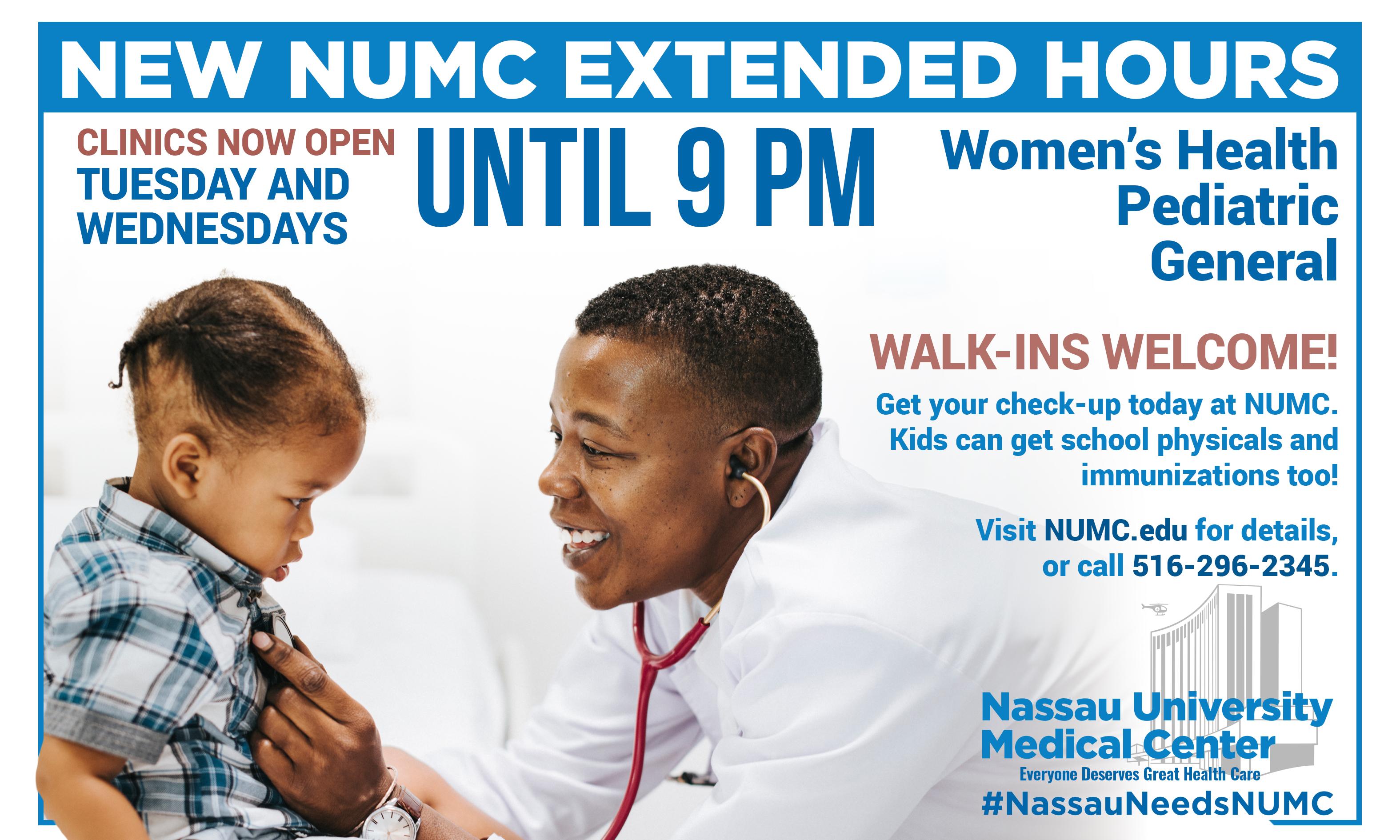































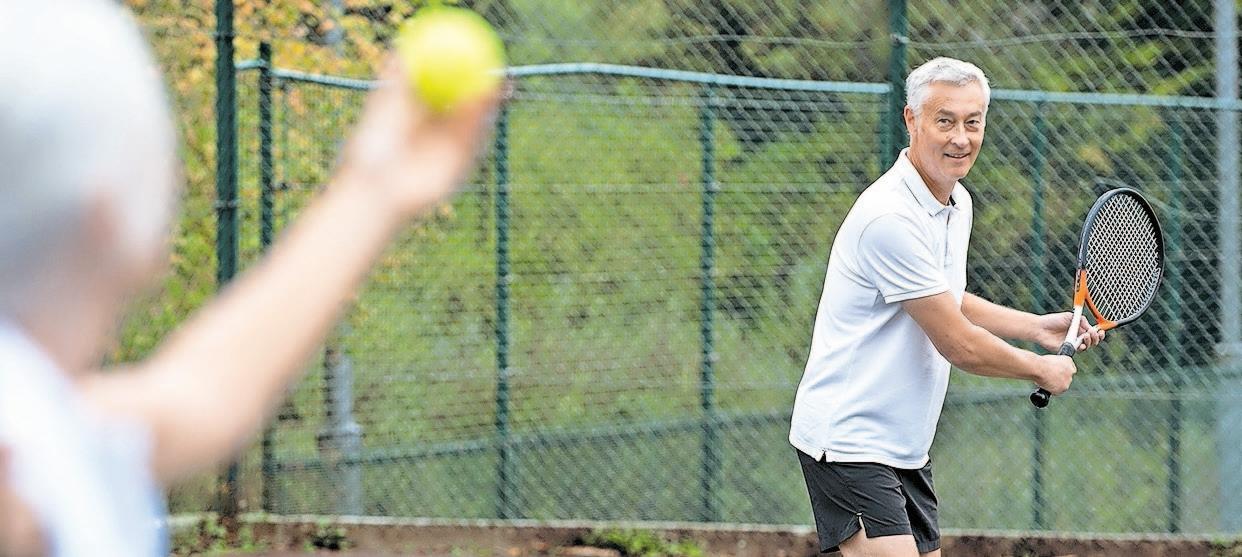
Centenarians, people who live to be 100 or older, make up a very small percentage of the U.S. population — about 1 in 10,000. Their longevity piques the interest of researchers and the public alike, who seek to understand how they defy the usual environmental and biological obstacles. While it might seem like their long lives are due to unique genetics, genetics actually account for only 25% of their longevity. The remaining 75% is attributed to lifestyle choices.
So, what contributes to living to 100 or beyond?
Historically, urban priorities shifted during the industrial revolution due to the high risk of infectious disease. Today, however, social isolation is a major health risk. Currently, one-third of the population reports having only two or fewer people they can rely on for comfort or support.
Research on centenarians reveals that they are typically surrounded by a network of family, friends, neighbors, and even acquaintances like the
mail carrier. They are seldom isolated, unlike many elderly people in the developed world. This suggests that a supportive social network is crucial for longevity.
Inspired by these findings, I sought to uncover how to extend life. Julianne Holt-Lunstad, a researcher at Brigham Young University, conducted extensive studies on thousands of middle-aged individuals, examining factors like marital status, exercise, diet, medical care, and substance use. After tracking these individuals for seven years, HoltLunstad determined that the most significant factor in reducing mortality was having strong social connections. Thus, maintaining a robust social network appears to be key to living a longer, healthier life.

(516) 788-7830 ilovehearing.com
Health memos are supplied by advertisers and are not written by the Herald editorial staff.
The only skilled nursing facility in Oceanside, Oceanside Care Center is a 100-bed rehabilitation and nursing center that has been a part of the community’s fabric for more than 50 years. Their unique approach allows them to provide patient-centered care in a way that no other facility can. OCC specializes in an array of different services, from short-term rehab to long-term care.
Oceanside Care Center provides unrivaled residentcentered care. Under the guidance of the highly skilled, professional staff, the team customizes a care plan matched to specific needs and abilities. The nursing team consists of registered nurses, licensed practical nurses and certified nursing assistants who are driven to build warm and compassionate bonds with residents.
The unique and intimately sized facility attracts many residents who enjoy a meaningful relationship forged between devoted staff members, residents and their families. Many staff members have worked at Oceanside Care Center for over
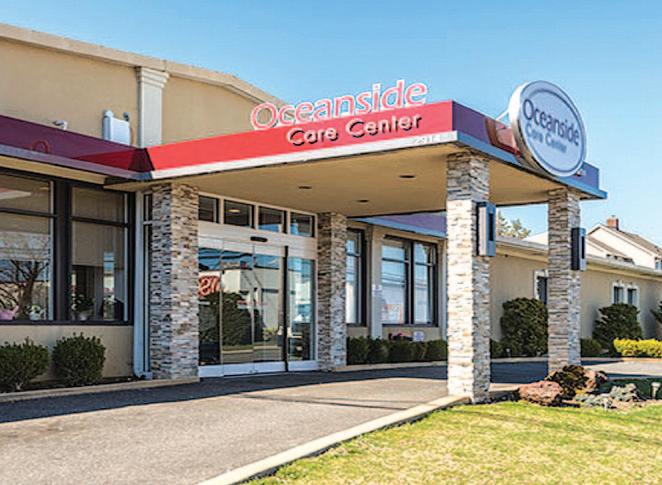
25 years and take great pride in the compassionate care they provide every single day.
With private and semi-private rooms, OCC offers many comforts that create a homelike atmosphere, including complimentary flat screen TVs in every room and three home cooked meals a day. Residents enjoy numerous activities and
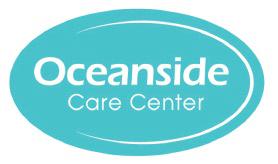
events that take place daily, and the kind and caring staff make it feel as if they never left home. The comfortable setting allows residents to focus on regaining their strength and independence while empowering them to enjoy fruitful lives with their families and friends.
Come in for a tour today!
2914 Lincoln Ave., Oceanside (516) 536-2300 www.oceansidecc.com
Health memos are supplied by advertisers and are not written by the Herald editorial staff.
The Queens-Long Island Renal Institute, Inc., offers the finest quality of care, state-of-the-art technology and uncompromised dignity, in a bright, ultra-modern setting.

QLIRI provides:
• In-Center Chronic Hemodialysis
• Home Dialysis
• Experienced Nephrologists and Dialysis Registered Nurses
• Comfortable, State-of-the-Art, Private Treatment Stations
• Personal TV/DVD and Free Wireless Access
• Homelike Reception Area

• Social Work Services
• Nutrition Counseling
• Individual and Family Health Education
• Stretcher Capability
• Valet Parking and Medical Transportation Available
• Quality Start

By Sharon Naylor
Are you a slumper? Check your posture right now to see if your shoulders are rounded forward and your back curled. Chances are you’ve eased into your natural posture: slouched down, head in alignment with your spine, shoulders back, back not straight. And your brain may be paying the price.
Researchers at several top academic institutions, including Harvard and Columbia universities, have been studying the link between bad posture and the brain for decades, and their recent findings show that improving posture can improve the brain’s function, and thus your mood and memory levels.
Researchers, for instance, found that when you assume what they call “power poses” of confident stance and tall, uplifted posture, your decision-making is subconsciously affected. When you stand or sit up taller, and pull your shoulders back and outward, your brain gets a signal that it’s the confident, powerful you in charge of your thinking, and, in turn, you might make more confident choices.
An Ohio State University study found that when you shake your head “no,” or nod your head “yes” while observing a scenario or listening to information, you may form positive or negative opinions about your observa-
tions depending on the motion of your head and its positive or negative message to the brain. And when you sit up straight, you’re more likely to think positively and recall more positive memories. Slumping and slouching can generate negative memories, thoughts and perceptions, which creates stress hormones in the brain, as opposed to happier hormones that can trickle down into your daily choices and create a more energetic, happier you that feels like working out. Everything is connected, and it all starts with how you hold your frame.
Banish the slumping for continued wellness throughout the decades
Dana Carney, a social psychologist at University of California, Berkeley, conducted a survey that was among the first to reveal that power poses demonstrating confidence (regardless of whether or not a person actually feels confident) increase levels of testosterone and lower levels of cortisol — the stress hormone — in the brain. Because testosterone is associated with self-confidence, having good posture can create hormones in the brain that make you feel more selfassured. Carney says the power pose sends a signal to the brain, and what begins as a neural impulse turns into an actual, physiological response that boosts brainpower.

And science aside, your posture affects how you see yourself, as well as how others see you. If you’re slumped down and slouching during a job interview, for example, the interviewer will likely see you as less confident, and perhaps will have a neural impulse to judge you as less capable. If you have good posture, with your shoulders back and your body aligned, you can look better in your clothes and will likely receive compliments from loved ones, which will boost your confidence and mood. You could also just love how you look in the mirror, which will make you feel lighter and more positive.
Good posture also pertains to walking. If you walk slumped down and in a shuffle, you look bedraggled and overwrought, which can make you actually feel bedraggled and overwrought. When you walk uplifted and with confidence, your brain registers “uplifted and with confidence,” and pumps out happy hormones to match the message.
Physical pain from bad posture can affect your brain, too. When you slouch often, you may experience back, neck, shoulder and even wrist pain, which can send signals to the brain that you’re suffering. The brain then needs to create pain-reducing hormones rather than happy ones. It’s quite hard to feel happy when you’re achy, sore or in such pain that you have to take medication for relief.

Pain can cause depression when the brain gets sapped of positive hormones.
Better posture leads to better brain power
So in many connected ways, good posture makes for a happier brain. And with your happier brain, you have better relationships, fitness, work performance, more intimacy and other positive effects on your lifestyle. There are several ways to improve your posture, including taking a Yoga for Better Posture class, or just yoga classes in general, since yoga elongates the body and retrains your frame to be more upright with your shoulders back and spine aligned, the position will soon feel more natural to you. Exercise as a whole also helps to improve posture.










Additional information about the mobile unit and its schedule are posted on the hospital’s Facebook page @MountSinaiSouthNassau
Green Acres Senior Center – Thursday, October 3
10am-2pm, 400 Flower Road, Valley Stream, NY 11581
Baldwin Senior Center – Friday, October 11
10am-2pm, 810 N. Grand Avenue, Baldwin, NY 11510
Levittown Senior Center – Tuesday, October, 15
10am-2pm, 555 N Newbridge Road, Levittown, NY 11756
Lido Senior Center – Thursday, October 17
10am-2pm, The Sands at Lido Beach, Lido Beach Town Park, 630 Lido Blvd Ste 2, Lido Beach, NY 11561
Merrick Senior Center – Monday, October 21
10am-2pm, 2550 Clubhouse Road, Merrick, NY 11566
Uniondale-Hempstead Senior Center – Tuesday, October 22
10am-2pm, 840 Uniondale Avenue, Uniondale, NY 11553
Franklin Square Senior Center – Monday, October 28
10am-2pm, 1178 Martha Place Franklin Square, NY 11010
Bellmore Senior Center – Tuesday, October 29
10am-2pm, 2000 Bellmore Avenue #A, Bellmore, NY 11710
Lido Senior Center – Thursday, October 31
10am-2pm, The Sands at Lido Beach, Lido Beach Town Park, 630 Lido Blvd Ste 2, Lido Beach, NY 11561
Elmont Senior Center – Monday, November 4
10am-2pm, 138 Elmont Road, Elmont, NY 11003
Merrick Senior Center – Thursday, November 7
10am-2pm, 2550 Clubhouse Road, Merrick, NY 11566
For more information, call Mount Sinai South Nassau’s Department of Community Education at 516-377-5333
*Vaccines are being o ered at no out of pocket cost. Your insurance may be billed.